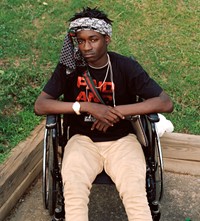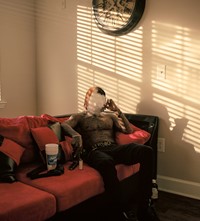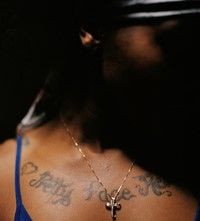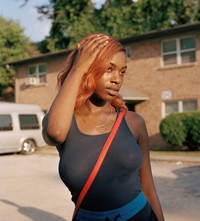French photographer Vincent Desailly heads to the heart of the genre redefining hip hop
- TextMiss Rosen
The line between hip hop and hustling has been blurry for years, the drug game affording countless rappers not only vivid stories, but the money to finance studio time and equipment – and yet it wasn’t until the advent of trap music that the line seemed to vanish all together. Taking its name from the place where deals are made, trap music is a distinctly Southern subgenre with its own unique style and sound.
Hauntingly atmospheric, its signature deep 808 kick drums, rapid hi-hats, symphonic instruments, and distorted vocals create a druggish, ruggish vibe which has made trap an industry powerhouse over the past decade. Although it has influenced other genres of music as well as the culture at large, with everything from trap yoga to trap brunch appealing to the “bad and boujee” crowd, trap itself remains a deeply hermetic realm closed to outsiders.
“What we were making wasn’t radio-ready and definitely not destined for the charts,” Gucci Mane wrote in his autobiography. “When I think about the trap I think about something raw. Something that hasn’t been diluted. Something with no polish on it. Music that sounds as grimy as the world that it came out of.”
It’s a world that French photographer Vincent Desailly entered in 2018 to make a series of medium-format photographs in Atlanta for the new book, The Trap. Here, Desailly speaks about his search for visual poetry to complement the sound of a world few have travelled.
“In the beginning of 2018, I caught up with a long time friend, Brodinski, a French DJ/producer who is one of the only Europeans who actually goes to the trap to make music. I joined him in May and he introduced me to up-and-coming rappers from the Cleveland Avenue neighbourhood in East Atlanta. At first I thought I should explain why I was there but I didn’t really know it myself – and most people didn’t ask or seem to care. All they asked was that I sent the pictures afterwards.
“I would meet people in real life by hanging out with the rappers Brodinski introduced me to or I would send DMs on Instagram to public figures like managers, producers, dancers, and rappers to tell them I was available at anytime to shoot for free. Once you had the trust and the approval of key figures of the community, you are free come and go, take pictures. But even if one person is welcoming you, another might think and act differently, which I understand and respect.
“When I was shooting a portrait, people would strike the same poses we see on social media. I would shoot a couple of portraits then stick around and shoot something more natural. I was just the French guy with the camera and I tried to be forgotten as much as possible – but I was shooting with a big medium format film camera with a tripod, I wasn’t exactly invisible.
“The first thing to strike me was the attention to detail. Everybody, from a 14-year-old kid to a grandmother, is extremely stylish. Hair, clothes, attitude, there is a vibe everywhere but only on people. The buildings and interiors – everything else seemed raw. In way I feel like I can hear this contrast in the trap music, something both smooth and brutal, and definitely magnetic.”
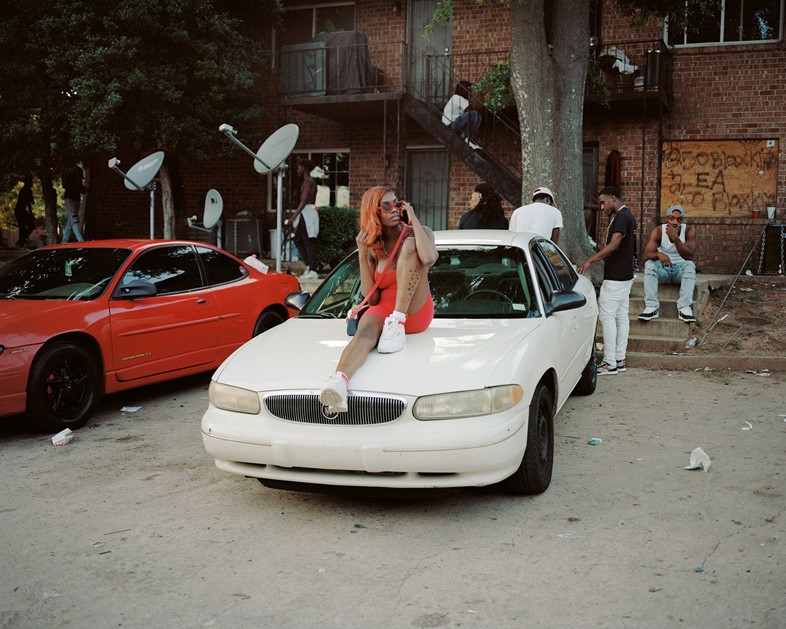
The Trap by Vincent Desailly is out now, published by Hatje Cantz.
